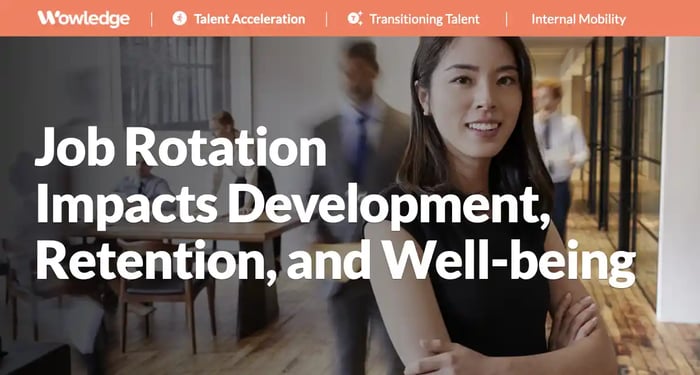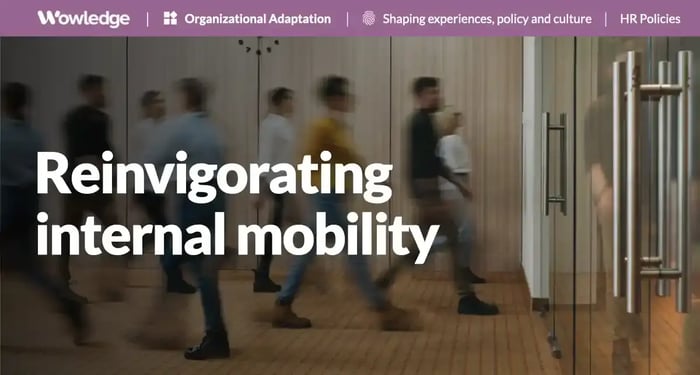Human beings naturally grow, learn, adapt, and evolve. This lifelong process is driven by many experiences in their rearing, relationships, education, religious practices, work, leisure activities, etc. When we consider how experiences change our perspectives and help us learn and adopt new skills, they also alter our self-perceptions of worth, confidence, value, and capability. Together, these create engaged and motivated employees who become increasingly capable of significantly contributing to the organization and its objectives and becoming reliable and sustainably committed assets. Establishing robust career paths supports that objective.
Offering career progression (both advancement and growth) supports the human need for growth and a sense of achievement and drives enterprise growth and goal attainment. This can lead to the positive “side effects” of continuous skill development, enhanced employee retention, sustainable productivity management, and improved business outcomes, painting a promising picture for the organization's future.
Developing career paths serves two primary objectives: meeting the needs of the employees and the organization. It's a win-win solution that meets employee and organizational needs, starting with the compensation team and engaging other HR functions and experts. The first objective meets employee goals by defining the steps they can take toward positions of increasingly higher levels of responsibility, enhanced pay, benefits, and status. The second is using career paths to guide qualified employees through steps that fulfill organizational needs for staffing key managerial, leadership, and expert roles. Therefore, career progression is a solution that benefits everyone, fostering a sense of mutual growth and success.
Why career progression is essential today
Talent shortages continue to haunt employers in the U.S., with 69% of companies reporting significant difficulties filling their roles, compared to only 14% 10 years earlier. Furthermore, 74% of workers report moderate-to-high levels of stress and burnout and are actively looking for some type of relief, which drives the high turnover rates.
Amplifying that concern is the finding that 90% of surveyed workers report feeling “stuck” in their current jobs. Recent research by Mercer found that 81% of employees felt at risk of burnout because they were not sufficiently rewarded for their efforts, and the existence of options (lateral or vertical) they can work towards can freshen the perspectives and motivation of those who feel stuck and stagnant in a role. Creating career paths and progression opportunities offers hope to those employees by providing a clear path for growth and advancement.
Having options and opportunities for growth promotions within their current department, transfers to others, or advancement into new functions or fields can address various employee preferences and motivations. For example, options for those who seek new work challenges can positively address a significant portion of the workforce. Among those who rotated into new jobs or projects, 90% felt that it helped them develop deeper skill sets (especially their problem-solving skills), 96% said that their productivity subsequently increased, and 84% reported increased collaborations with other departments.
When well-designed and executed, robust career paths and progression opportunities (created and housed in a job architecture) can substantially address employee drive for better opportunities and advancement.

Types of career paths or progressions
There are several types of progressions, with common names such as “career paths,” “career ladders,” and “career lattices.” Career paths are output from the job evaluation process, where an organization's required positions are defined, compared, and ranked on several differentiating factors. The job of the compensation team is to create progressions of related jobs into what SHRM refers to as “career ladders” or successively higher roles within specific career fields (e.g., accounting, manufacturing, sales) based upon their relative and increasing levels of responsibility and pay.
These are captured in “job families” due to their primarily vertical nature. Several ladders will often exist in functions with broader and differentiated skills and responsibilities, such as in HR (compensation, recruiting, learning, administration, technology, etc.) Successive titles, from the entry-level to the most experienced, might look like marketing assistant, analyst, administrator, coordinator, supervisor, manager, director, and vice president. Similarly, a typical progression for an engineer might look like this: Associate Engineer, then Engineer I, II, III, Principal, Manager, Director, and Vice President.
A job description explains each role, including its unique (and increasing) duties and responsibilities, education and experience requirements, reporting relationships, and minimum skills and capabilities.
Similarly, career paths can represent a historical or potential cross-job family movement, such as those captured in a “career lattice.” Those pathways outline lateral and upward mobility opportunities that leverage overlapping skills from one field that can be applied to another. For example, the career path to a vice president of manufacturing might start with an associate engineering role and progress through a senior design engineer, project manager, senior supply chain manager, Six Sigma Blackbelt, and director of operations.
In general, then, career progressions are designed to support the movement of employees from one role to another logically based on an evolving and expanding set of skills, experiences, and individual capabilities that qualify them for roles with a more significant impact on company objectives.
Benefits of defining career progressions
The primary value of identifying and defining various career progressions lies in their ability to support the development of employees in preparation for replacing more senior colleagues as they inevitably leave the organization due to retirement, resignation, or other reasons for termination. Continuously developing a steady talent supply is a priority for organizational growth and sustainability. To maintain that steady stream of people ready to step up and into positions of greater responsibility, companies can look to traditional HR goals and benchmarks as markers of success for the movement of employees between jobs.
For example, companies with high rates of employee mobility report almost twice (2X) the median employee tenure (5.4 years) versus other companies (2.9 years). Similarly, the ability for employees to move laterally is 2.5 times more predictive of employee retention than their current pay level. A large meta-analysis of research studies found that job rotations significantly impact employees’ job satisfaction, organizational commitment, career success, labor flexibility, general psychological health, job performance, productivity, and easing of stress/burnout.
What we see is that career paths, ladders, and lattices enhance the employee experience and build corporate capabilities by offering significant advantages (especially over external hiring) such as:
- Lower turnover rates
- Faster speed to full job competency
- Increased employee engagement
- Reenergizing of longer-tenured workers
- Easier maintenance of the company culture
- Expanded employee networks (and collaboration) within and across functions, departments, locations, and business units
These effects are amplified when career progressions are activated as a critical element of the corporate culture, regularly practiced and encouraged by top leadership and middle management. This is furthered when the design efforts of the compensation function are integrated with the strategies and actions of the recruiting, L&D, succession management, and business unit HRBP organizations.
Challenges to be overcome
Unfortunately, despite being defined in a structured and mostly well-communicated manner, the realities of employee movement up and across job levels are surprisingly low. The Pew Research Center has found that 63% of U.S. employees who quit their jobs in 2021 cited a lack of career advancement opportunities as the leading reason for resigning. Much of this may be due to “talent hoarding,” where managers actively discourage employees from seeking other internal jobs to maintain their team's productivity.
Lateral mobility rates alone are reported to be only 8% per year, with only 25% of companies reporting theirs above 15%. The addition of promotion rates, estimated at only 6% per year according to SHRM, suggests that only 14-18% of employees are rewarded with fresh challenges and growth opportunities annually.
The issue boils down to meeting employee needs to retain them and leverage their internal networks and knowledge of how to efficiently and effectively complete their technical and administrative tasks. However, 58% of workers report that their companies do not have enough growth opportunities for them to stay long-term.
Creating comprehensive career progressions
The establishment of career paths starts with the compensation system or “job architecture” design and development process. By following a structured approach to compensation programs, the natural flow from one job level to another will create growth promotion opportunities based upon an individual’s function or job family (e.g., software, accounting, marketing) and level of education and/or skills, and relevant years of experience. The typical steps that define the progression from entry-level up through executive ranks in each family include:
- Review the compensation and classification structure
- Identify logical pathways with functional experts and upper management
- Create logical pathways to both leadership and senior non-management roles
- Clarify the skills, expertise, relationships, and related competencies required to demonstrate readiness to move up. DO NOT fall into the trap of leveraging only tenure and experience
- Clarify the types of critical experiences and capabilities that employees must demonstrate and be observable by job experts to qualify for promotion. Explain how aspiring employees can demonstrate those—how they show up, document them, etc.
Note the inclusion of “senior non-management roles,” which provide advancement opportunities for those either not suited or uninterested in moving into traditional management roles. Those “subject matter expert (SME)” roles create a pathway for individuals whose expertise can be leveraged in enhanced product, service, or process development, as well as project management, technical advisory, or coaching roles.
Creating career lattices that cross job families is more challenging but opens a potentially larger talent pool for more critical positions that are hard to fill (and retain). Two approaches bring the discovery of new opportunities for growth and advancement – the traditional and AI-generated models. The key is discovering skill and capability linkages or overlaps between various company roles.
The first approach is conducted through a series of top-performing employee career reviews, where high potentials’ (HiPos) job career progressions are charted and reviewed for commonalities and uniqueness. Interviews might lead to the discovery that while the pathway for a Director of Operations most often includes progression through a series of engineering roles, the top performers had stints or significant project experience working with external vendors and partners in procurement. Other successful people in that role might have also come from early jobs in procurement and proceeded through transfers or promotions into systems engineering, where they experienced the integration of all design, development, and testing functions. Another avenue is to compare the overlap of competency models or job requirements (or job evaluation factors used in the job evaluation process) between job families and roles and look for commonalities.
A second and exciting approach to identifying career lattices is using HR technologies that leverage AI, such as talent marketplaces. These compare jobs on their required skills and skill levels based upon a search and analysis of job descriptions, competency models, succession job profiles, etc., and compare how much a given employee’s skills and capabilities (from resume, skills assessment, performance evaluations, completed learning programs/certifications, and other formal assessments) overlap with the requirements of other jobs. Through this, people who their manager or other processes may not have identified can be flagged as potential candidates. This technology is now also used in both career management and learning management systems that can recommend learning or experiential paths to fill gaps and qualify them for the future.

Tips for designing and implementing effective career paths
Identifying career progression pathways always starts with the compensation team and the architecture it creates and progresses when alternate paths through a series of roles and functions are discovered. However, as we have seen earlier, making movement a real possibility for more than 14% of the employee population requires cultural and behavioral shifts across the organization.
1. Create a formal governance structure
Bring top and functional leaders, line managers, and HR leaders from compensation, recruiting, L&D/leadership development, and succession management to create and guide a strategy that supports, encourages, and oversees a career development and progression success story. Use them as ambassadors to promote the value of expanded career experiences. Bring employee listening and related data (turnover, engagement, productivity) to the group to keep them informed and consider enhancements that address specific concerns and any lack of progress.
2. Leadership must commit
Making employee movement up and across the organization a reality requires top leadership’s proactive support and encouragement. Leaders should be engaged as champions of the value of employee mobility to make the career progression structure actionable and recognized as part of the employee experience. They need to hold the managers in their chain of command accountable for developing, preparing, and encouraging their staff members to seek internal (within or outside the department) growth opportunities after 2-4 years in a given position.
3. Career lattices should be considered suggestions
The pathways to new functions and roles cannot be predicted with precision. For example, a manufacturing engineer pursuing and earning an MBA might be well-suited for roles in product/service pricing or procurement/supply chain management. In contrast, a peer who developed software skills might become suited for a CAD/CAM expert role. Different skills and ambitions will drive individual decision-making, and uniquely qualified employees frequently carve out their pathways.
4. Individual ambitions, motivations, and aspirations matter
Career development must consider the individual, what they are capable of, their potential, and what they are willing to do to make a change. Some employees prefer the consistency of growing in a single career field, and some have family obligations that (temporarily) limit their ambitions, while others crave frequent change. Another element is the availability of non-management roles at higher positions and pay levels (e.g., management and non-management career tracks with similarly attractive compensation opportunities). Career pathways and progressions should consider and accommodate different types of employee ambitions and timeframes.
5. Communication and access are essential
Whatever structures and pathways exist, employees and managers need to understand them and be able to access information about them. The employee and manager should conduct and document regular conversations, clarifying ambitions, readiness, and development plans. These can occur during frequent check-ins, performance evaluations, or scheduled career development and planning discussions, all of which should be part of a formal process guided and overseen by leadership. Digital/online information, guidance, tools, assessments, and planning documents should be widely available to all employees.
6. Measure the movement
Track employee mobility through the various elements of the career ladders, paths, and lattices. Focus on managers, functions, locations, and business units (plus employee demographics) to establish historical benchmarks and track movement up, over, and across as new elements of the strategy and structure are either introduced or promoted. Track employee engagement or targeted pulse surveys to identify the gap between their interest and observed mobility. Conduct workforce planning and succession analyses to identify critical talent gaps and identify opportunities to close those with targeted employee development and movement. Create analyses that measure the impact of the changes and movement on talent and business outcomes, such as retention, revenue, customer satisfaction, productivity, and profitability. Publish the metrics and use them to guide improvements in the career structures and processes.
Relevant Practices & Tools
Core Career Development Practices that Translate Employee Ambitions into Occupational Progression Action Plans. >
Core Career Development is a process through which employee development is guided towards a targeted series of successive job roles that build upon one another and provide... more »
Constructing Career Paths to Identify Future Aspirational Roles. >
A career path (or “ladder”) is a logical progression of increasingly challenging jobs within a specified function that primarily includes vertical movement throughout an organization... more »
Defining Career Lattices to Define Robust Lateral and Vertical Mobility. >
The ability to enable the movement of employees proactively and strategically from role to role at the leadership, professional, and operational levels is a key flexibility... more »
Conducting Critical Workforce Segment Gap Analyses to Prioritize Future Talent Plans. >
A talent segment gap analysis identifies where shortages will likely exist in critical talent roles and provides the basis for replacement planning well in advance of the future loss... more »
The Learning Council Chapter Template: Define a Governing Body to Guide and Oversee the Learning and Development Function. >
The Learning Council Chapter Tool documents decisions made regarding the purpose, membership, structure, and standing agenda items for a governance council made up of business and HR... more »
About Wowledge
Wowledge is the expert-driven platform for lean teams building strategic HR programs. Members enjoy access to up-to-date best practices, step-by-step guides, tools, templates, and insights to accelerate the design and implementation of all key HR programs and processes.
Since each organization has unique characteristics, needs, and aspirations, Wowledge's practices are developed utilizing an exclusive stage-based approach – from Core to Advanced to Emerging – that reflects distinct levels of sophistication to meet our members where they are.
Build strategic HR programs with refreshingly easy-to-follow best practices.
Get started for FREE! Learn more.










